A milky, earthy aftertaste lingers in my mouth. An egg-sized lump of fresh butter sits in the palm of my hand, roughly enveloped in bark and moss and zealously held together by twine. My bundle is ready to be buried in the mire.
Hamilton-based artist and curator Maria Simmons creates and nurtures sculptural installations that function as living ecosystems unto themselves. Last January, we had a chance to reconnect during a bog butter workshop and tasting, which Simmons hosted as part of a series of food-based artistic interventions presented by the Creative Food Research Collaboratory. Gathered around simple foods — bread and butter — we sampled the artist’s bog-aged Lactantia® and created our own butter vessels to re-embed in the muskeg come springtime.
Witnessing matter’s transformations over time, Simmons’ works enhance or highlight the sometimes mysterious interconnectedness that exists between living and non-living things. The artist continues to be informed by the industrial landscapes of her hometown, Hamilton, and by their deep entwinement with natural sites throughout southern Ontario. Growing and eating fungi, fermenting lichens, and Fruitopia® in transparent vats, Simmons exposes herself to polluted environments to collect microbial samples and rainwater; her practice renders the porosity of the body apparent, perceptible. In recent years, with each new installation the artist invites the viewer to consume some of its parts, whether in the form of site-specific ferments, homemade wines, or other unexpected concoctions.
A few weeks after the workshop, Simmons and I sat together for a conversation. We discussed their artistic trajectory, their interests in mythology, preservation, decay, collaboration, and their upcoming research into carbon-rich peatlands.
A lot of my work is building on this idea that purity is a myth, and that contamination is our base state of being. Which shouldn't be moralized. Life itself is contaminating.
LD : The last time we did an interview was back in 2018. You were making soft sculptures at the time; I remember suspended bundles, sewn from pieces of fabric that you dyed with plant dyes. They had a bodily feeling and vaguely looked like viscera. Later, during your master’s, you made silicone sculptures that looked like skin-covered cocoons which contained small biomes. Can you trace a line between those earlier pieces and the more immersive works you are making now?
MS : I wouldn’t call it a straight line, but there is definitely some sort of connecting thread. The sinewy textile pieces were more specifically inspired by haruspicy, the ancient practice of studying organs to foretell the future. In my work, there is still an interest in rituals and mythologies. These mythologies often surround various ecologies — such as site-specific hauntings, natural portals — and how humans relate and operate within these environments. There are still lines of inquiry that are the same. What diverted me away from plant dyes is that I became more interested in the plants themselves rather than in the possibilities created by their extraction. I wanted to incorporate plants as living things, and expand my research beyond tinctorial plants.
LD : I often think about how to subtract the extractive parts. I don’t know whether this is me being realistic or cynical, but these days I often come to the conclusion that it’s nearly impossible to make or participate in art within our current conditions without it being somehow extractive.
MS : It’s impossible. That’s where the complication sets in; it’s something we have to come to terms with.
LD : It would be difficult to talk about your work without making analogies to bodily processes related to ingesting, digesting, regurgitating, metabolizing. Perhaps the simplest way to describe your practice is that you create environments that do all of these things. Can you introduce the ideas you’re working through in your current work?
MS : In my work there are a couple of different subjects I’m dealing with, often in dualities. Currently I’m really interested in the tension between decay and preservation. Some natural environments do both at the same time; often these things aren’t one without the other. I’m interested in those processes happening simultaneously. I’m also questioning ideas of contamination versus purity, and the myths surrounding these notions.
You talked about metabolizing — I like this idea of being able to break things down, knowing how they’re broken down, how things can be processed or not processed, and relating those to ways of working through this moment in late stage capitalism.
LD : Your work embodies your own personal relationships with the landscapes or sites you choose to investigate or interact with. Rather than presenting these (often contaminated, chemically-altered) landscapes as damaged and doomed, nor on the contrary, investing in an overly optimistic narrative, your work simply contends with the current state of things as they are.
MS : A lot of that originates from my upbringing in and around Hamilton, Ontario. It’s such an interesting spot; you’re surrounded by steel factories yet it’s also the city of waterfalls. It’s both very industrial and somehow also a really gorgeous natural area. But the waters are highly polluted … Growing up there and also loving nature in these conditions forged my perspective. I remember there would be acid rain warnings sometimes, and you couldn’t swim a lot of the time. Yet I remember looking at the steel mills and seeing these big flames and this aura they would put off at night and thinking it was beautiful.
Having to face the smokestacks and mills and co-exist with them everyday has played a role in my work — especially in not viewing my works as utopian environments. In certain circles there’s a discourse around various organisms being able to save us. My work in a way participates in that sort of conversation, but I sense a danger in claiming one thing as a hero. While they might contribute to the balance, plastic-eating bacteria will not save us, or fungi.
My work involves contaminated futures, the garbage that we’ve created, and the after-math (or current-math) of extraction and production. I’m interested in how we can perhaps metabolize our way through, in messy, convoluted ways.
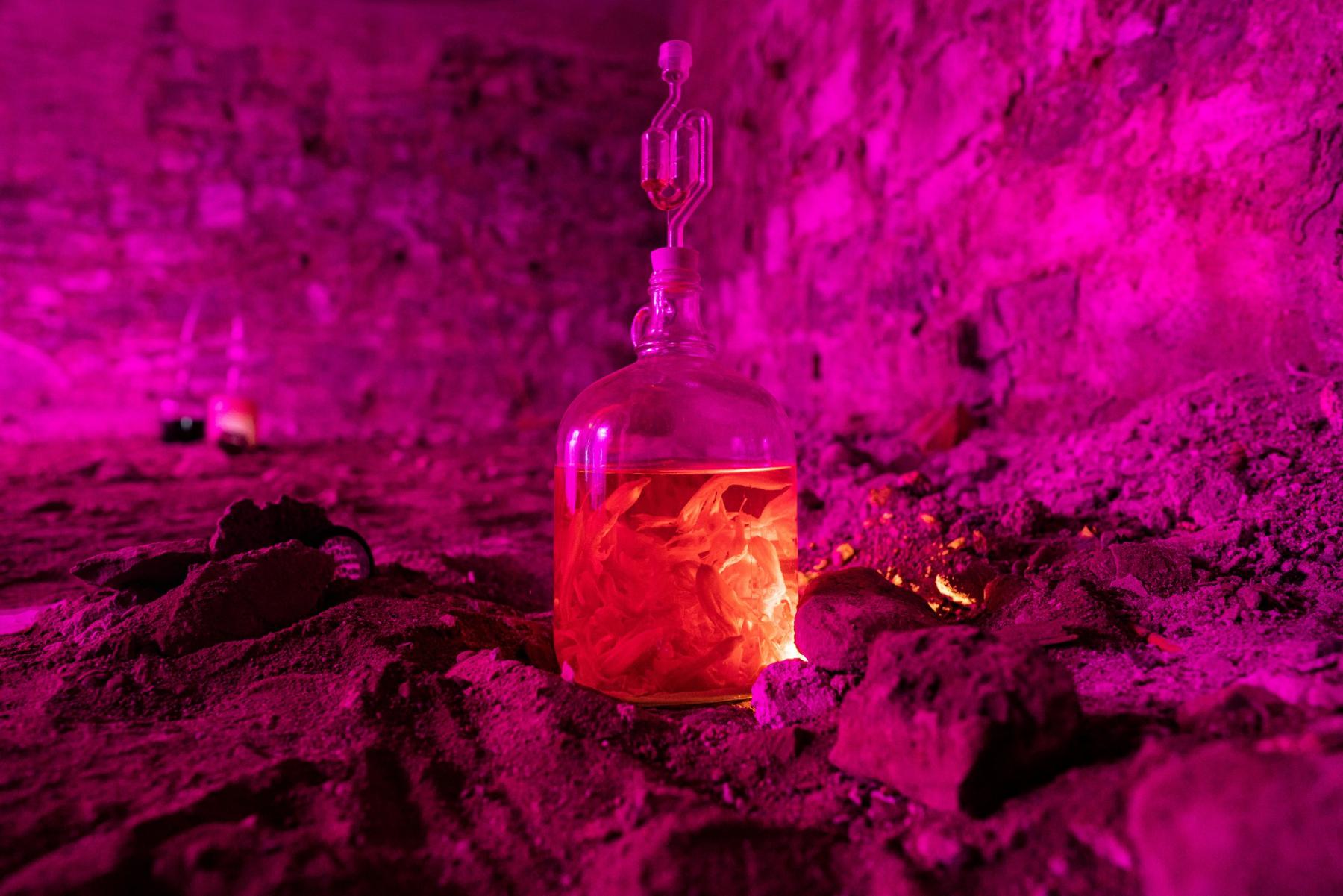
.jpg)
Rat Plastic Wood, 2021
LD : Site-specificity plays a role in some of your works. I’m thinking for example of Rat Plastic Wood, the installation you created during the pandemic in the basement of this church and community space in Hamilton, Ontario. It had a defunct gymnasium that was familiar to you in your childhood, a unique site to activate. Can you elaborate on what prompted this project? How does working site-specifically (versus not) change your approach?
MS : This piece in particular was more site-fated than site-specific. During my master’s I was living back at home because of the lockdowns and was reintroduced to all these childhood spaces. I was trying to make art in the best way that I could, given that we couldn’t use our studios.
The space that was in the side building of this church was built ages ago in the 1800s, and used to be a gymnasium. The floor was ripped up and it was just a basement with dirt floors and high ceilings. It became the perfect spot to set up a temporary studio space; there was no one in there anyway. It became the setting for everything. I was taking samples from the walls, looking at them under the microscope. I wasn’t yet thinking of doing an installation there, I was more invested in the material research. Being in that setting for 6 months really informed my thesis work. Ultimately it’s the place where the installation always should have been shown, but it wasn’t designed to be in that space. Originally, the pieces were made for my thesis, which was presented at the University of Waterloo Art Gallery in a classic gallery environment. The reason I showed it again in the church basement was because the pandemic made it so that no one could see it in the gallery. Now that space is gone.
A lot of my work is modular and can adapt to various spaces. Anoxic Memory, the exhibition I presented at the Visual Arts Centre in Clarington, Ontario was definitely created for that space, but the “bog eye” I created on the third floor; that’s an example of something I’ve reused. I used the same wood that was part of the greenhouse structure in Rat Plastic Wood. I do tend to reuse the body from past artworks to make new works as much as possible.
LD : As I imagine it, your kitchen-studio-laboratory welcomes edible plant matter, yeasts and fungi, but also soil, detritus, and various forms of decay. There, we might come into contact with seemingly foreign bodies. Some might raise concerns about contamination, but for you this contamination is generative. Can you share your perspectives on this?
MS : Your description of what you’re imagining as my working space to be is very accurate. Introducing edible components into my work started around 2021, so in several places pandemic lockdowns were still in effect. With Rat Plastic Wood, this tension between purity and contamination was very much present in a lot of peoples’ minds. Sharing fermentations with people was interesting in that context. We had tiny, disposable sterile cups to pour home-made ditch lily wine into; we’d be outside the church wearing masks, passing around these cups without getting too close. Yet everyone walked away with a little piece of the exhibition in them. It was a really beautiful community-building thing, where everyone involved had these same microorganisms inside of them.
A lot of my work is building on this idea that purity is a myth, and that contamination is our base state of being. Which shouldn't be moralized. Life itself is contaminating. This myth that we’re one thing, technically one human, with agency to make decisions — what does that really mean? More so, I think that my path through life is the result of this huge system of microorganisms and communities that constitute me.
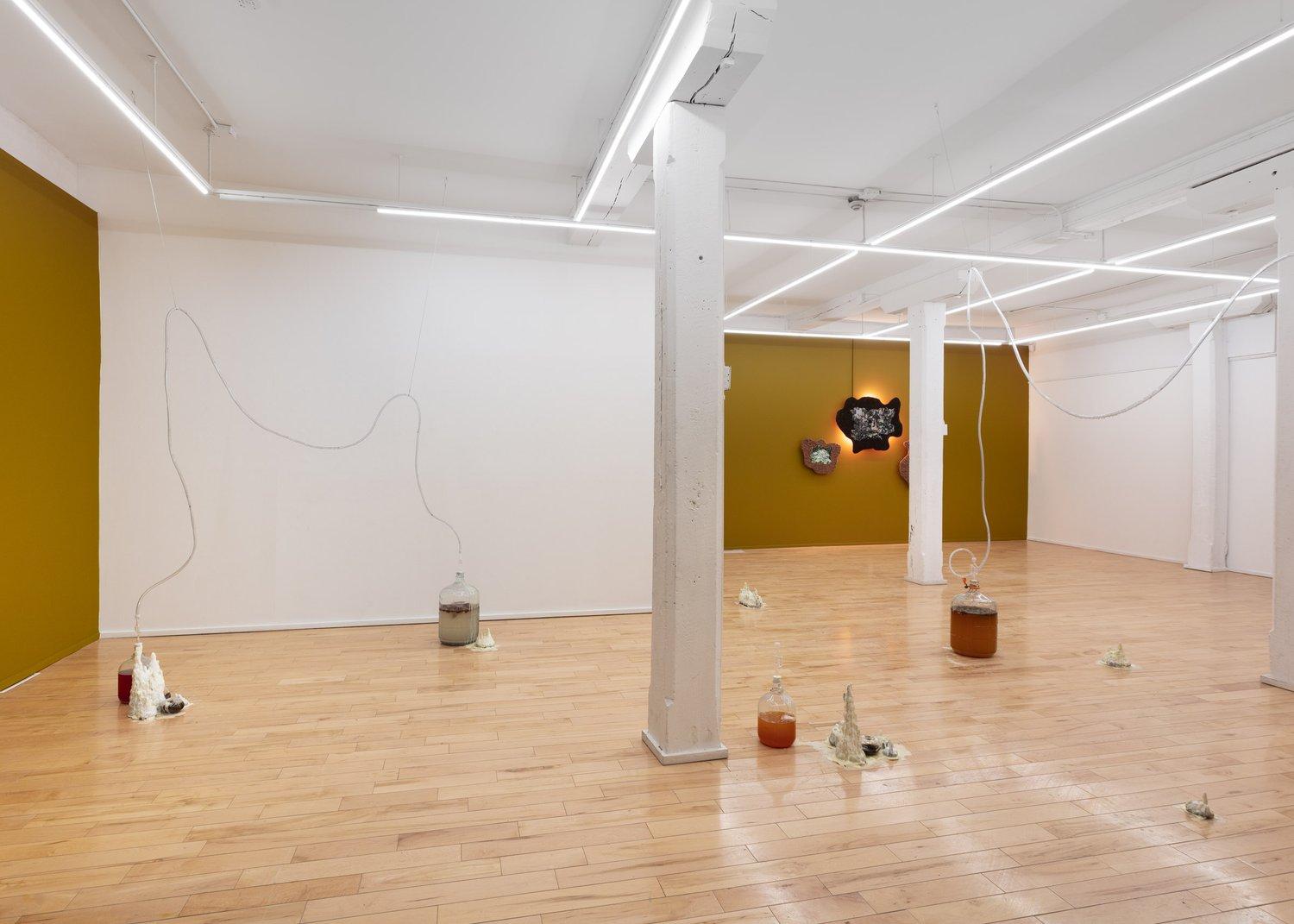
Anoxic Memory , 2023, installation view at The Visual Arts Centre of Clarington (VAC)
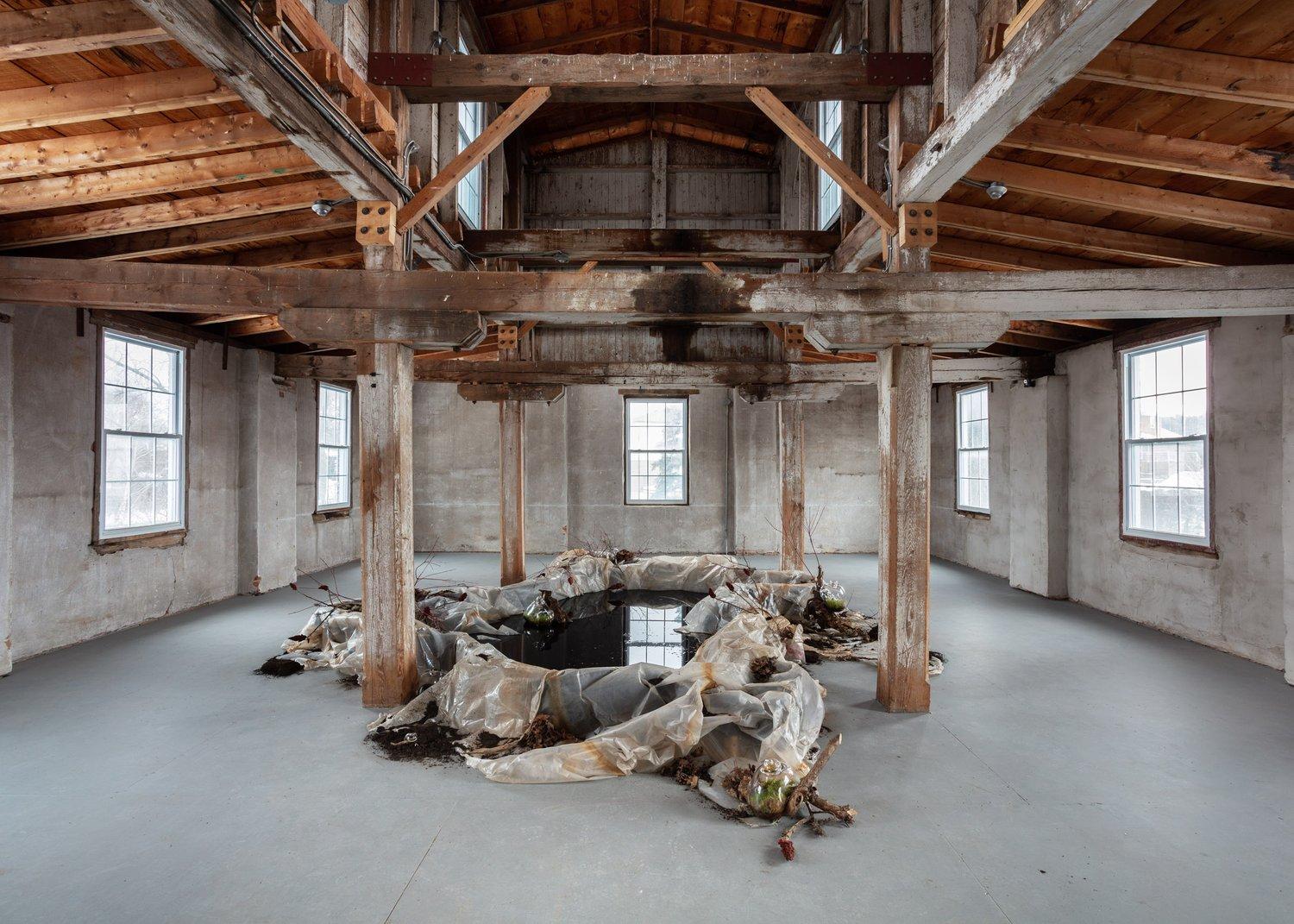
Anoxic Memory , 2023, installation view at The Visual Arts Centre of Clarington (VAC)
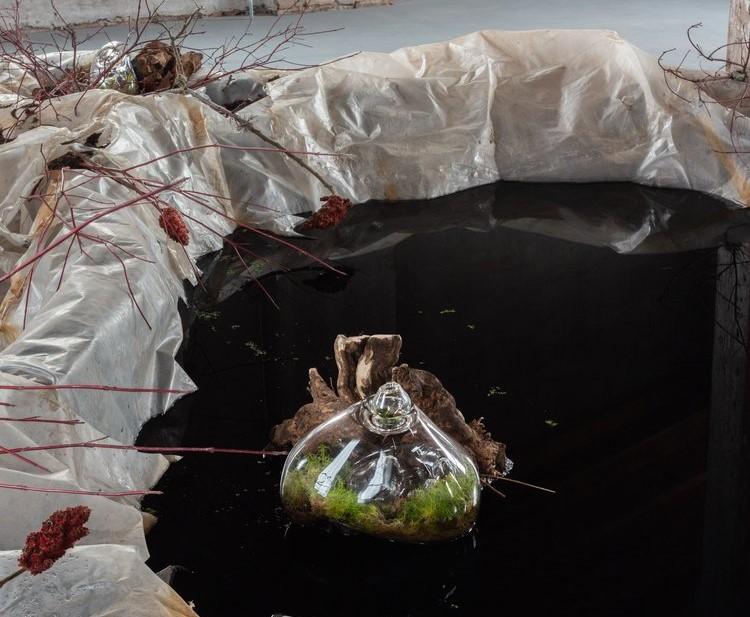
Anoxic Memory , 2023, installation view at The Visual Arts Centre of Clarington (VAC)
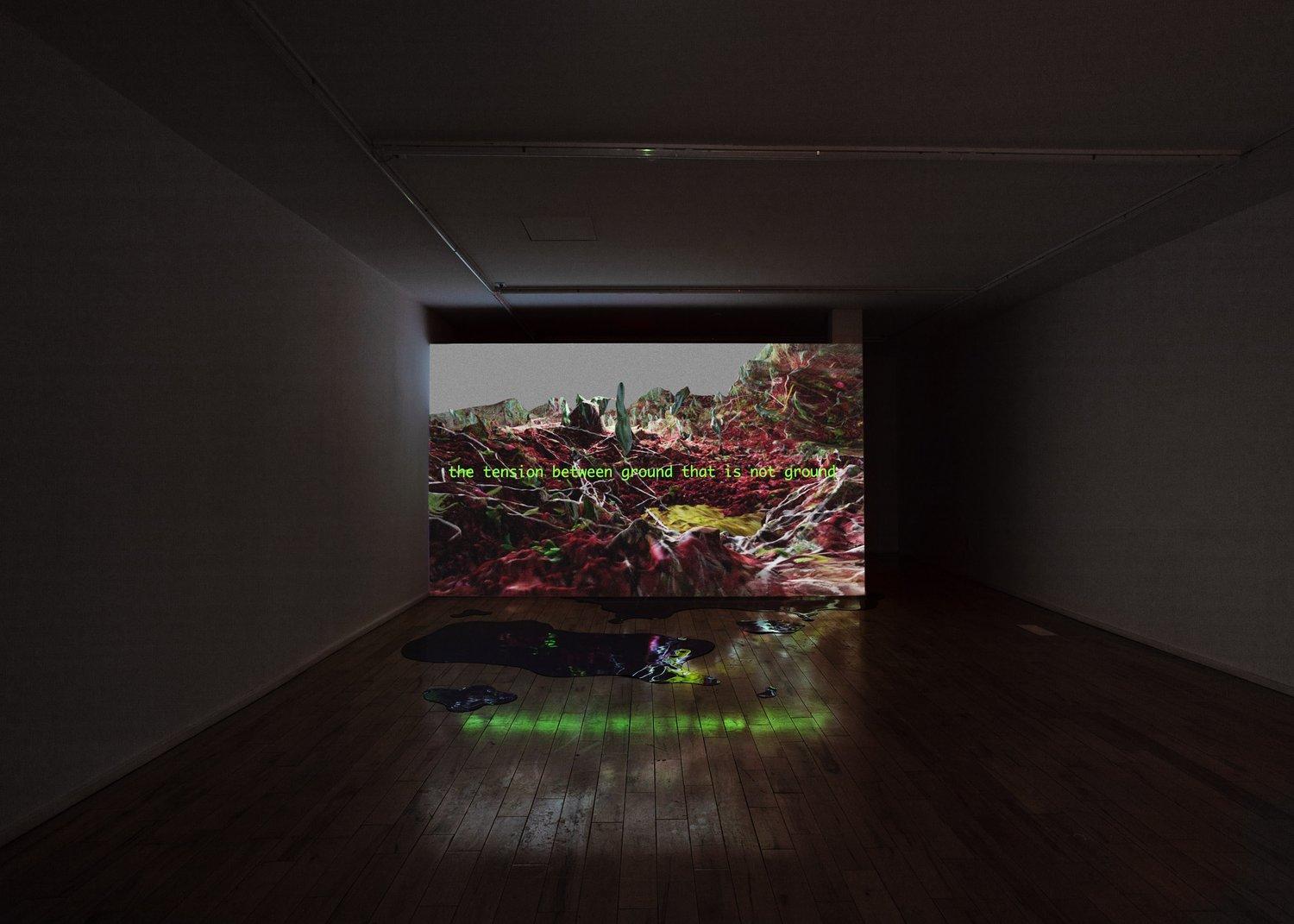

Land Bodies, Decomposing Mass, 08:10 min. Video in collaboration with Ingrid K. Bjørnaali
LD : What is the role of collaboration with other artists in your current practice? I was alluding to porosity and generative contamination; is collaboration a way of opening up your own practice?
MS : Although not all my projects are collaborative with other humans, a lot of my work is collaborative with non-human entities. But currently I’m working with artists Ingrid Bjørnaali (Norway) and Fabian Lansmaier (Austria), and that’s been an incredibly successful collaboration, which is not to take for granted. In successful collaborations you actually have to enact and embody the things that are being talked about through the work. These concepts are so multitudinous — the whole point is to decenter my own experience sometimes and the human experience overall. Having other people’s ideas and holding them with equal weight, or sometimes centering someone else’s practice instead of your own — I don’t know, I think of it as seasons, ebbs and flows.
LD : How does foraging, collecting, and recycling detritus from your surroundings, including parts of your own past artworks, typically begin? Do you seek particular materials, specimens, or objects, or does the process occur more instinctually?
MS : It varies. I don't create a lot of saleable or archival work, however a lot of energy, time and love go into the artworks I make. Being able to eat the bodies of my old works or incorporate them into new pieces helps me process the heartbreak of dismantling site-specific work. I’ll keep a piece around for about a year, to let it have its time before I take it apart, because I find there’s a sadness in dismantling things and I hate throwing things out. It creates various generations of artworks in my practice — artworks spawning new works.
Often I’ll go out to collect garbage. I don’t have a specific idea of what I’m looking for in terms of colour, shape, etc. but every once in a while I’ll find a “good” piece of garbage and it’s very satisfying. There are no rules for what makes good garbage, but it has to have some trace of history. Working with trash is interesting because its lifespan is so long. If I incorporate garbage into an artwork, it will probably outlive the artwork. In other words the “artwork” part is only a small chapter of its life.
LD : I guess this is also because it has a direct link to someone’s consumption habits, and, in a way, their life?
MS : Yeah, foraging for garbage definitely is unique in that you're collecting objects with set, yet unknowable histories. Incorporating them into a piece makes it kind of unknowable, a combination of other people's experiences— the trash's trajectories — yet it definitely also becomes a portrait of me, the collector and my instinctual preferences. As a kid I always wanted to go to the dump. To me the dump was this magical spot and it infuriated me that it was not safe for me to just go and rummage through [laughter].
When it comes to plants, it’s more difficult when you’re moving a lot. For a while I was hopping around and sadly plants hate that. I had this artwork that had a lot of Mother of Thousands plants, which are easy to keep through generations. But in the context of exhibitions it can be tricky to keep plants alive. Some artists will factor that in and swap the plants if they die, but that’s something I’ve always tried to avoid. Either it dies or lives. It ties back to the idea of utopia; I really want to stay away from creating false environments, or creating a false sense of hope. For me, replacing a plant part-way through the exhibition without it being overtly stated would be an issue on a fundamental level, so I choose plants and objects knowing they will have to survive, to some extent, for the duration of the exhibition. Generally plants that clone themselves deal well with drought and various other conditions.
My work involves contaminated futures, the garbage that we’ve created, and the after-math (or current-math) of extraction and production. I’m interested in how we can perhaps metabolize our way through, in messy, convoluted ways.
LD : While you collect garbage, certain elements in your sculptural works seem to hold more personal significance. In the list of materials for the show at the VAC, there are vacuum sealed items such as an engagement ring; an origami swan; an amethyst from your childhood rock collection; a hand-written note from 2009. This outflow of keepsakes is encapsulated in brewing carboys filled with unusual ferments made from sodas, yeasts, and several other ingredients. Two competing impulses are at play: the fermenting (breaking down) and the preserving (the anaerobic barrier of the vacuum seal). Broken down over time into their basic chemical and elemental components, these mementos will persist; they will eventually be stored in fatty tissues, accumulate in layers of sediment, circulate through bodies of water and buried streams… I guess I’m curious about all that.
MS : To start off more broadly, I’ve always been interested in these mass accumulations of things. When I first found out about fatbergs, I couldn’t think about anything else. Things that accumulate out of sight or in areas we don’t often address intrigue me. This extends to garbage dumps, sewers, fatbergs, the accumulation of things within the body, like toxin buildup…
LD : Hyperobjects!?
MS : Yeah! And how they are related to memory, things that are kept submerged or repressed. In the VAC exhibition I wanted to include a variety of memories I hadn’t processed fully, or aspects of my past that were vacuum sealed to be preserved and pressurized within these fermenting environments that are actively metabolizing and changing. It’s been a through-line — things that are submerged that change or don’t change. I don’t have a great memory, so holding on to artifacts helps me to remember. Relics of past selves. These objects hold on to these memories for me. I’m curious about how memories are processed through the body, keeping in mind that the body is both an ecology and a metabolism.
LD : More recently, you’ve taken an interest in bogs and peatlands, and made installations that mimic the anoxic functions of these environments. In the fall and winter you hosted a couple of workshops where you presented your new “culinary” adventures in making bog butter, one of which I attended. Bog butter is fascinating, I don’t even know what to call it — an earthy comestible artifact? According to Wikipedia : Peat bogs, being low temperature, low oxygen, highly acidic environments, have excellent preservative properties. The theory is that food products [including butter], were buried in bogs to hinder spoilage. Tell me more…
MS : Bog butter! [laughter] My interest in bogs is related to the fact that these environments both metabolize and preserve. Bog butter is hard to classify. Its history is traced back mainly to places like Ireland and Scotland, where a lot of peat farming takes place. When people dredge up peat bogs, they harvest it to use as fuel for heating houses. And in the process, farmers have found these huge — sometimes up to a hundred-pound — logs of butter buried in the layers of moss and decay. Some of the oldest bog butter dates back to 5000 years ago; somehow it alledgedly still had a dairy smell and was deemed edible.
LD : Eating 5000 year-old butter, you must feel time on a completely different scale…
MS : Yeah, I’m curious to know what’s going there — maybe these butters contain bacteria that humans are no longer used to… Or maybe the 5000 year-old bog butter is the fountain of youth [laughter].
LD : Yeah, and mythology is part of this as well, right?
MS : These landscapes are overflowing with mythology. For instance “bog eyes” which I mentioned earlier, the water-logged centermost part of the bog, were seen as portals to the underworld. I’ve gone swimming in one of them and I wasn’t transported into another world, although it was magical.
Another common story is that visual and aural hallucinations would lure people into the bogs, entice them and trap them. Navigating the bog can be tricky if it’s deep enough; it behaves a little like quicksand. There is also a lot of mystery surrounding bog bodies, which have been found perfectly preserved. It’s unclear whether the purpose was ritual sacrifice, or hiding murder, or simple accidents. There is little to no written history around these, so it invites a lot of speculation.
Wealth and jewelry has also been found in peat bogs, so there is another hypothesis that they were used as strange storage banks. Which is also reflected in language — stagnancy, being “bogged down”, being “swamped” — it’s all language that refers to being slowed down, weighed down. There is this thing about bogs that is inherently anti-capitalist. Bogs don’t circulate, they don’t accelerate, they just hold and slowly transform things. They also store all this carbon that has been trapped over many years.
LD : Lastly, where and how do you see this project or research evolving?
MS : I’m aiming to do larger projects around the peatland complexes of Northern Ontario. This spring and summer I’ll be spending two months making ceramic vessels for my homemade bog butter at Est-Nord-Est in St-Jean-Port-Joli, Quebec.
Long term, I’m also interested in the James Bay Lowlands. The future and political landscape of that area is quite contentious. Ecologically, the lowlands store massive amounts of carbon, so it’s crucial that they are not disturbed. The mass dredging of peat bogs to form agricultural land (all the decomposed matter makes for very fertile soils) is just not worth it. Peat bogs are like the reverse of a hyperobject. They store all this carbon, but when you think of it all being released back into the environment it’s a real concern. That’s why they’re sometimes called carbon bombs. As of 2007, there have been claims that a significant quantity of minerals useful in the production of electric car batteries could be found in the James Bay Lowlands. There have been proposals to prospect and mine that area, but that would also involve developing a whole system of roads to access the bogs, which are in a remote area. It would disturb and release so much carbon, not to mention the consequences of the mining itself. There is also controversy around whether the site actually contains this alleged presence of minerals. It’s debatable.